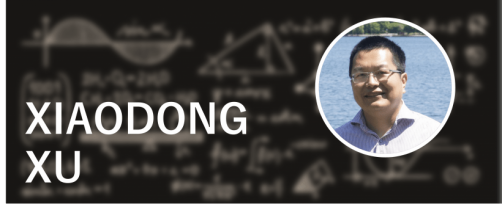WHAT DID THE 2012 EARLY CAREER AWARD ALLOW YOU TO DO?
Semiconductors are materials which have an electrical conductivity ranging between conductors and insulators. They can be pure elements or compounds. Semiconductors are key to modern science and technology. This is because their electrical conductivity can be controlled using a variety of external tuning knobs.
The Early Career Award has enabled me to establish a range of fabrication and optical measurement tools. With these tools, we can create, probe, and understand the physics arising from the behavior of large numbers of electrons in atomically thin semiconductors.
The ability to isolate graphene taught us how to obtain single atomic layer, or monolayer, semiconductors. The most famous of these are of a type called transition metal dichalcogenides (TMDs). We, along with other researchers, have found that these monolayer semiconductors are distinct from normal bulk semiconductors due to their unique physical properties.
Our early efforts discovered two TMDs - MoSe2 and WSe2 - as two clean semiconductors with exceptional optical properties, meaning laser light can excite electrons in these materials. These electrons bind strongly with the positively charged “bubbles” - or holes - left behind, forming excitons. These dominate the optical response, and the momentum – or “valley” – of the exciton is linked to the optical polarization. This property allows scientists to use polarized light to create a quantum superposition of the valley states. Electric fields can be used to control excitons. Therefore, it is also possible to create electro-optical devices in these systems. One example is 2D light emitting diodes (LEDs), used for lighting.
We also developed 2D multilayer structures, made by stacking two different monolayer semiconductors. These devices are a powerful platform to study the emergent effects of many interacting particles (such as excitons, electrons, and holes).
We are working on emergent properties in these systems, including creating and understanding topological and strongly correlated physics. One exciting example is our recent discovery of ferromagnetism – or ordering of spins – induced by the excitons. The established research program has also enabled us to carry out a series of experiments that have created the fast-growing field of 2D magnets.
These systems provide a platform to study the most fascinating problems in physics – magnetism and topology. They also offer promising ways to realize energy efficient information, data storage, and computing technologies.
We continue to explore this field, focusing on understanding and developing new ways to control the coupling between spins, charges, and the underlying lattice of the system.
ABOUT:
Xiaodong Xu is a Boeing Distinguished Professor at the University of Washington in the Department of Physics and the Department of Materials Science and Engineering.
SUPPORTING THE DOE SC MISSION:
The Early Career Research Program provides financial support that is foundational to early career investigators, enabling them to define and direct independent research in areas important to DOE missions. The development of outstanding scientists and research leaders is of paramount importance to the Department of Energy Office of Science. By investing in the next generation of researchers, the Office of Science champions lifelong careers in discovery science.
For more information, please go to the Early Career Research Program.
THE 2012 PROJECT ABSTRACT:
Title: Photon-Electron Interactions in Dirac Quantum Materials
Abstract
The objective of this proposal is to understand and control electron, photon, and phonon interactions in new classes of Dirac quantum materials, such as graphene and topological insulators. These materials have unusual physical properties which hold promise for novel energy harvesting technologies.
The proposed work will investigate the fundamental and technical aspects of these materials using the combination of ultrafast optical spectroscopy and electrical transport measurements. Spatially and temporally resolved photocurrent measurements will allow us to explore novel electronic response with optical excitation, including energy transport by non-equilibrium Dirac quasiparticles, spatial transport and dynamics of topologically protected spins, and spin and valley Hall effects.
The resulting fundamental understanding may lead to new energy-efficient applications in high-speed electronics, dissipation-free spintronics, and photovoltaics.
RESOURCES:
KL Seyler, P Rivera, H Yu, NP Wilson, EL Ray, D Mandrus, J Yan, W Yao, X Xu, “Signatures of moiré-trapped valley excitons in MoSe2/WSe2 heterobilayers.” Nature 567, 66 (2019). [DOI:10.1038/s41586-019-0957-1]
BHuang, G Clark, E Navarro-Moratalla, DR Klein, R Cheng, KL Seyler, D Zhong, E Schmidgall, MA McGuire, DH Cobden, W Yao, D Xiao, P Jarillo-Herrero, X Xu, “Layer-dependent Ferromagnetism in a van der Waals Crystal down to the Monolayer Limit.” Nature 546, 270 (2017). [DOI: 10.1038/nature22391]
JS Ross, S Wu, H Yu, NJ Ghimire, AM Jones, G Aivazian, J Yan, DG Mandrus, D Xiao, W Yao, X Xu. "Electrical Control of Neutral and Charged Excitons in a Monolayer Semiconductor." Nature Communication 4, Article number: 1474 (2013). [DOI: 10.1038/ncomms2498]
Additional profiles of the Early Career Research Program award recipients can be found at the Early Career Program highlights page.
The Office of Science is the single largest supporter of basic research in the physical sciences in the United States and is working to address some of the most pressing challenges of our time. For more information, please visit the Office of Science website.
